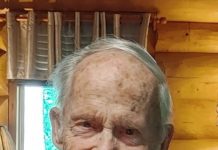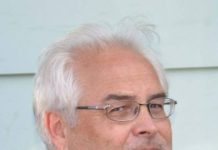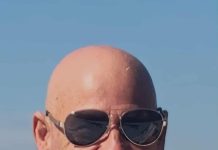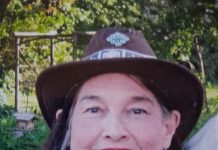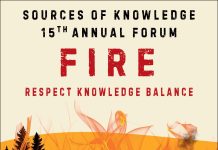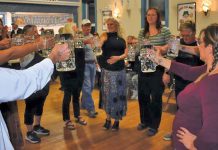Submitted by Mike Warkentin (aka “The Dark Sky Guy”), Bruce Peninsula Biosphere Association
and Beth Anne Currie, Bruce Peninsula Bird Observatory
You may be noticing the return of some old friends to the Saugeen Bruce Peninsula. Golden-crowned Kinglets, Dark-eyed Juncos (of the Slate-coloured form), and Brown Creepers have already made their appearances at the Bruce Peninsula Bird Observatory. Mid-April also sees a good movement of Northern Flickers, blackbirds (Common Grackles and Red-winged Blackbirds) and American Robins.
According to BirdCast, a collaboration of scientists at the Cornell Lab of Ornithology, Colorado State University and the University of Massachusetts Amherst that uses weather radar and machine learning to track bird migrations, we are headed into the peak season (May 15-21). During this peak, there may be more than a billion birds in the air! The birds have a difficult enough trip from their overwintering grounds in Central and South America without taking into account ALAN. ALAN or Artificial Light at Night can cause birds who normally use the stars and the moon to plot their paths, to become disoriented and fly into skyscrapers, low-rises and residences. In Canada alone, window collisions kill 16-42 million birds per year according to Environment Canada.
The Saugeen Bruce Peninsula (including Northern Bruce and Southern Bruce) are Dark Sky Communities and have dark sky lighting bylaws. Despite these bylaws, there is more that can be done. We can all play a role in eliminating ALAN and reducing needless bird deaths. BirdCast and other organizations recommend:
– Turning off non-essential outdoor lighting from 11:00pm till 6:00am.
-At the cottage turn off those deck/dock lights, path lights, outdoor hot tub lights etc. and draw your curtains at night to keep the light inside.
-If you can’t turn them off, put them on motion sensors or timers (these are cheaply available online).

-For all outdoor lights, make sure they are shielded, so that the light points down to the ground and not up into the night sky. Kichler makes a great very inexpensive dark sky adapter that works well.
Taking these steps from February 15-June 15 will save the most birds, but why not do this year round?
Finally, stopping bird collisions means making glass safer by day. Birds don’t view glass windows as solid objects and often fly into them at full speed, resulting in injury or death. Break up the reflection of skies and trees in your windows by using decals or cords spaced 2 inches apart on the outside of the glass.
Do your part to ensure our feathered friends keep returning by reducing ALAN, and making glass safer by day!



